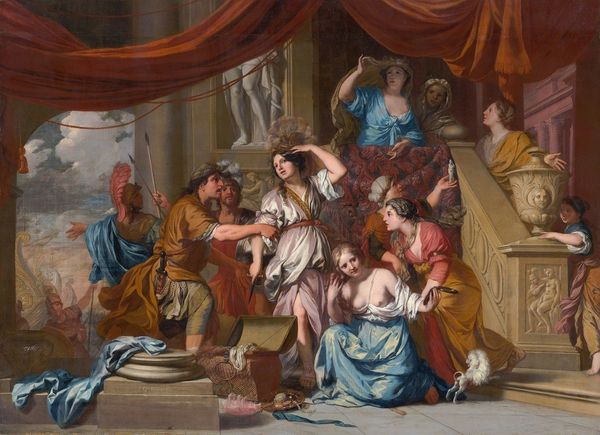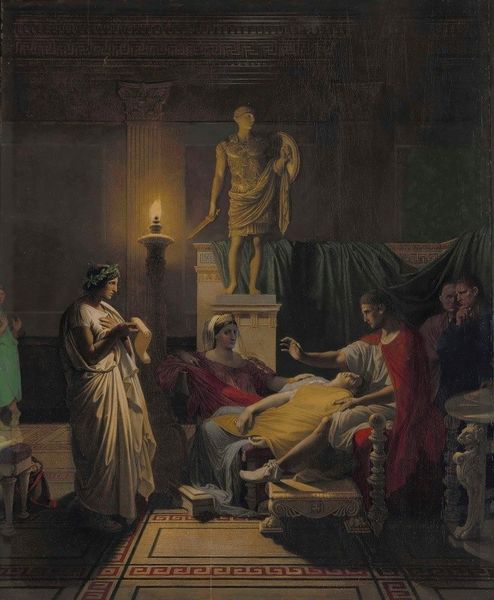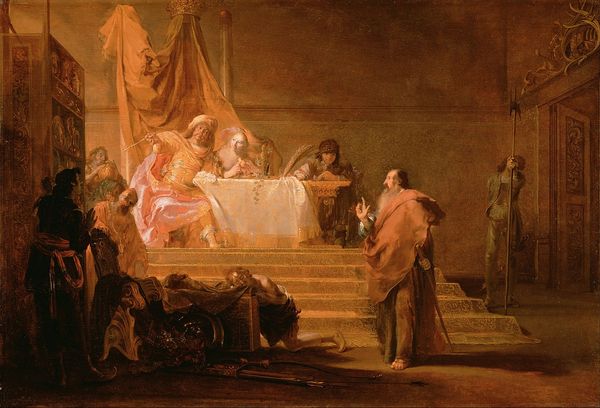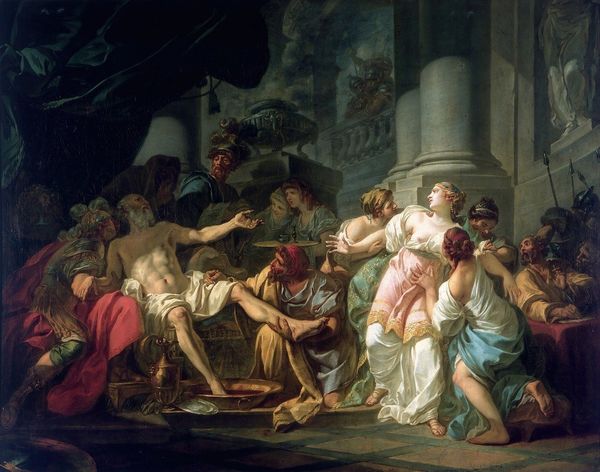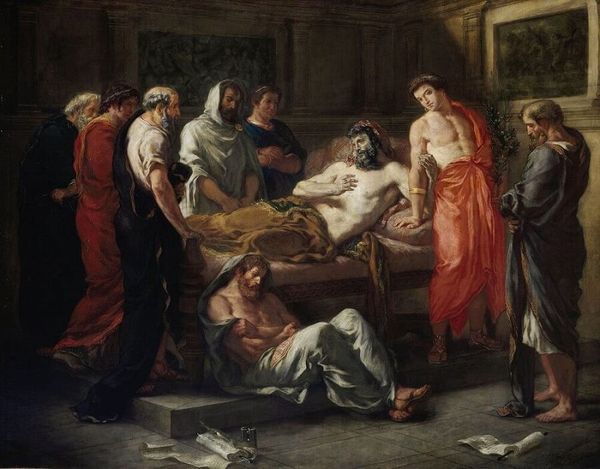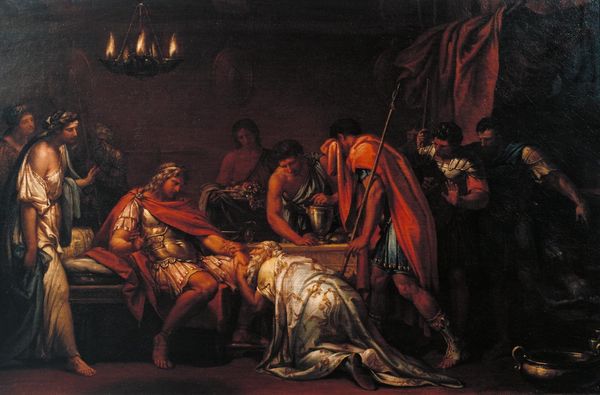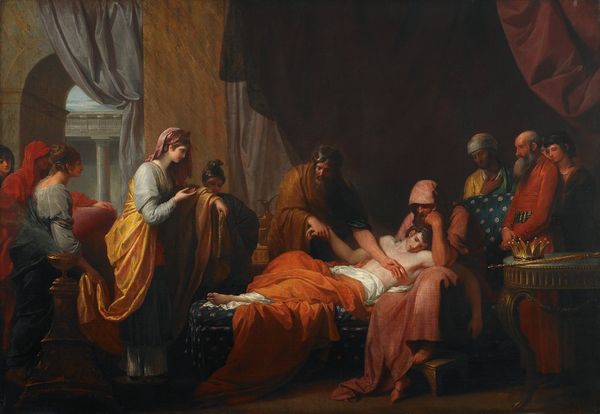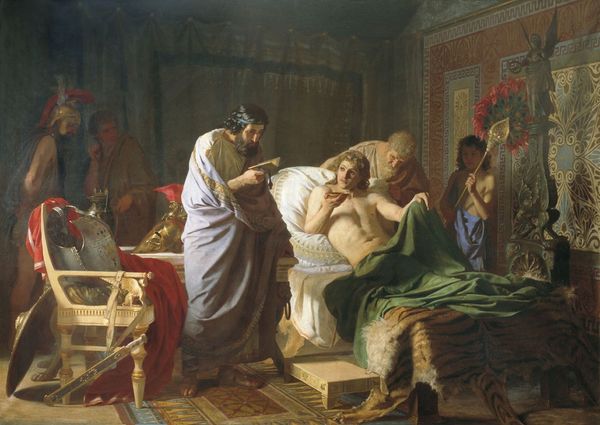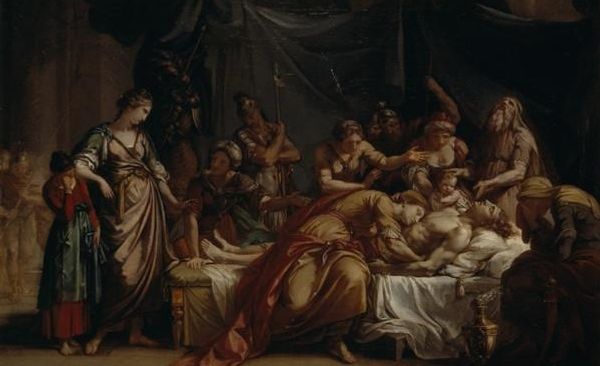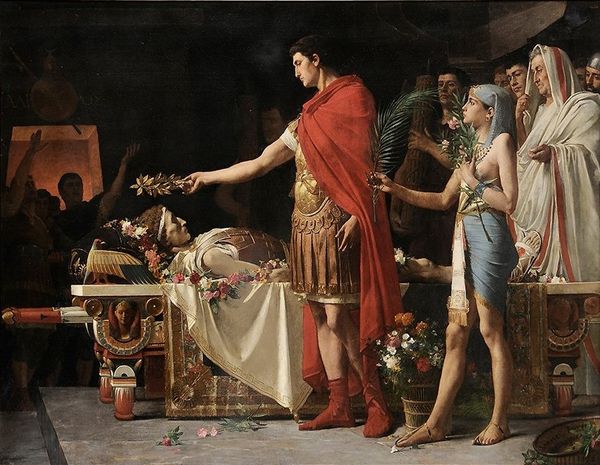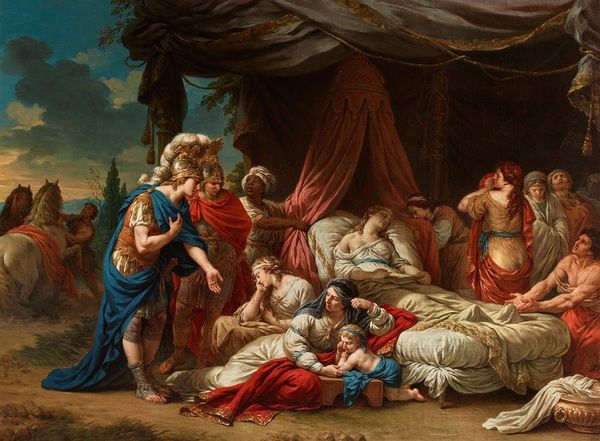
painting, oil-paint
#
figurative
#
baroque
#
painting
#
oil-paint
#
painted
#
figuration
#
oil painting
#
genre-painting
#
history-painting
Copyright: Public Domain: Artvee
Gerard de Lairesse painted ‘Cleopatra’s Banquet’ in the Dutch Republic, likely in the late 17th century. Here we see the artist grappling with the politics of imagery, constructing a grand scene of wealth and power. De Lairesse uses classical architecture and dress to evoke a specific time, while the extravagant setting and dramatic gestures of the figures speak to a culture of display. In the 17th century Dutch Republic, art served not only as a reflection of personal status but also as a commentary on political power and the historical narratives that legitimized it. The display of luxury items and the emphasis on classical themes were visual assertions of a specific type of identity and status. By delving into the social and institutional context of the Dutch Republic, we can better understand the narratives these artists sought to construct. Historical documents, estate inventories, and writings on art theory provide us with a deeper insight into the significance of works such as 'Cleopatra's Banquet', and the cultural values they reflect.
Comments
rijksmuseum about 2 years ago
⋮
Cleopatra made a bet with Mark Antony on who could give the most lavish banquet. She won by dissolving a priceless pearl in vinegar and then drinking the mixture. De Lairesse painted this story like a scene from a play, situating the figures clad in antique costumes in a fitting décor of Classical architecture and furniture. His classicizing style breathed new life into Dutch painting.
Join the conversation
Join millions of artists and users on Artera today and experience the ultimate creative platform.
